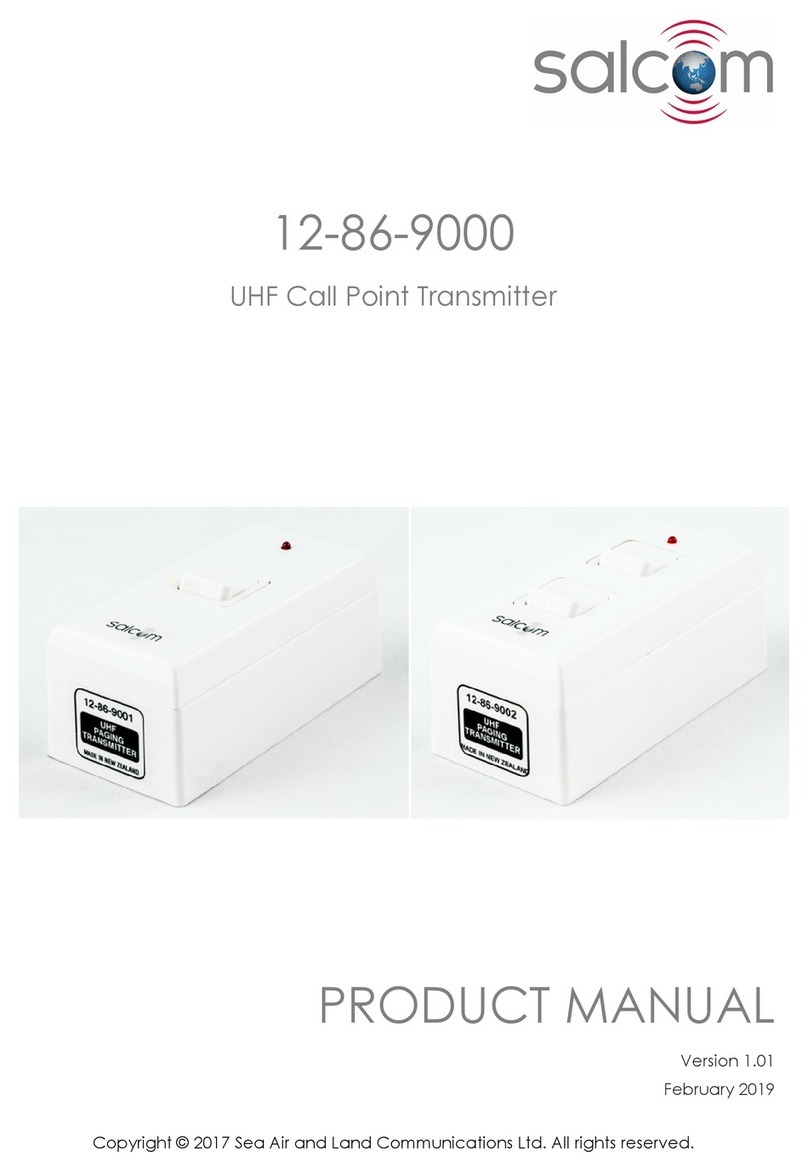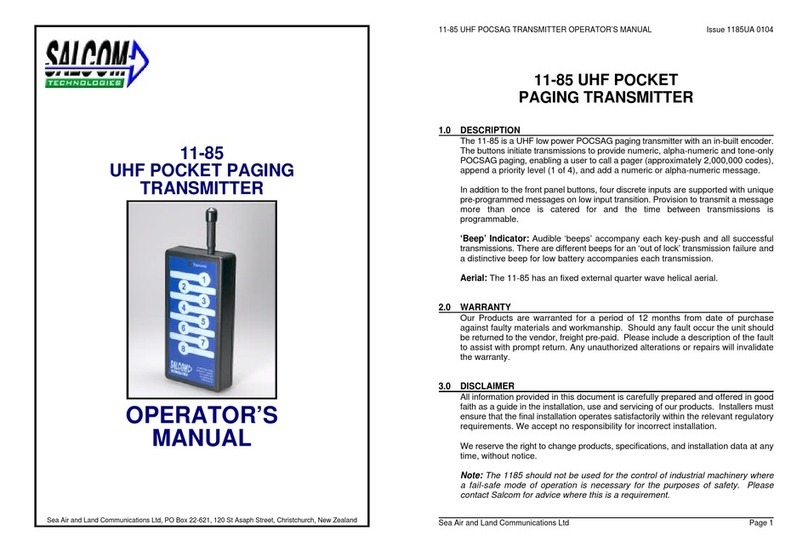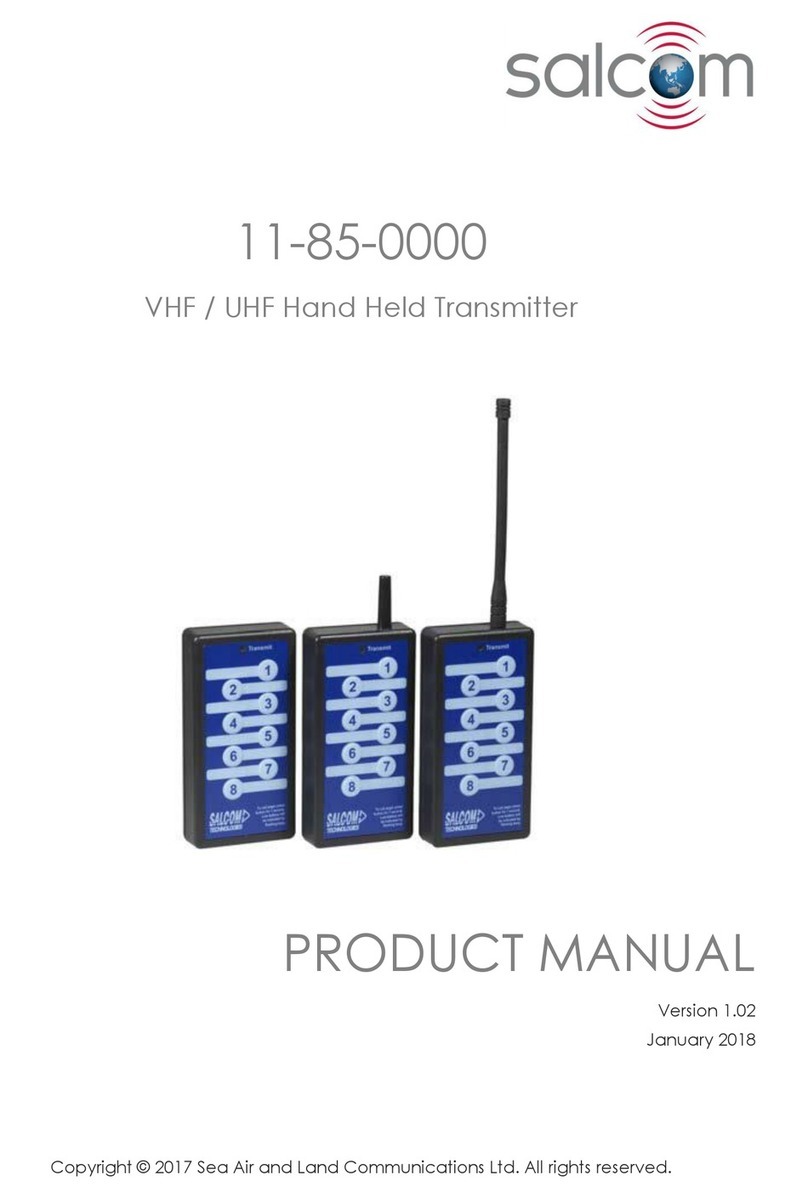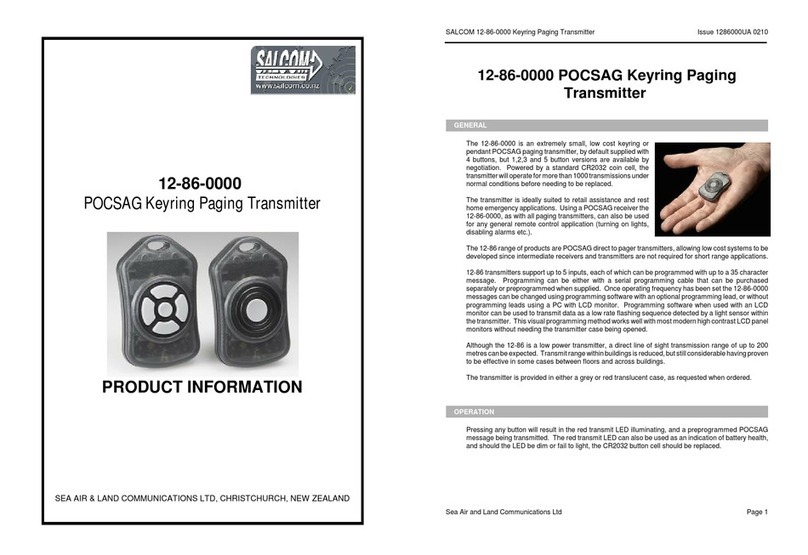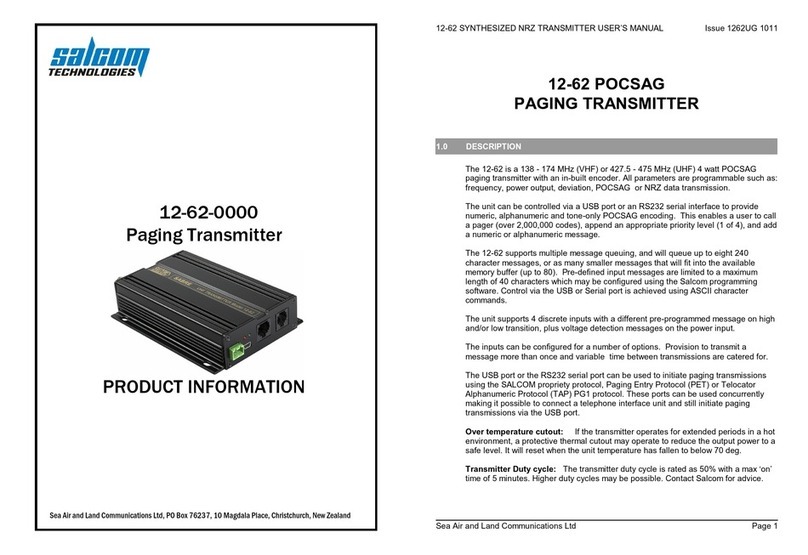The 12-62 Series transmitters are available as VHF and UHF units, with user-programmable power
outputs ranging from 50 milliwatts to 4 watts and a high VSWR tolerance. Using programming
software, each model can be tuned across its full frequency range with no hardware adjustments.
They are capable of operating as NRZ or POCSAG transmitters. The built-in POCSAG encoder can
be enabled or disabled as required.
In addition to a direct/RS232 buffered serial port, an on-board USB port enhances the range of
applications to which the transmitter can be applied. Input / Output expansion is also possible via
an external RJ45 interface
The USB, RS232 ports can be used to initiate paging transmissions using the Salcom proprietary
protocol, or Telocator Alphanumeric Protocol (TAP) PG1 PET (Paging Entry Protocol). These ports
can be used concurrently making it possible to connect a telephone interface unit and still initiate
paging transmissions via the USB port, with the RF output being through a standard BNC
termination.
The unit supports 4 discrete inputs with a different pre-programmed message on high and/or low
transition, plus voltage detection messages on the power input, having programmable debounce
delay control. They may be used to initiate relay commands for remote control applications.
Provision to transmit a message more than once and variable time between transmissions are
catered for.
The 12-62 supports multiple message queuing, and will queue up to eight 240 character messages,
or as many smaller messages that will fit into the available memory buffer (up to 80). Pre-defined
input messages are limited to a maximum length of 40 characters which may be configured using
the Salcom programming software. Control via the USB or Serial port is achieved using ASCII
character commands.
A watchdog is available to initiate an action or transmit the state of selected inputs at a
programmable frequency.
The 12-62 can be configured to transmit a warning message when the power supply (battery)
goes below a user specified minimum level and above a user specified maximum level.
Configuration of the transmitter is performed via the USB port or the serial port using the Salcom
programming application which allows for the setting of all operational parameters.
The 12-62 is housed in an attractive, durable extruded aluminium case with provision on the base
plate for wall mounting.
